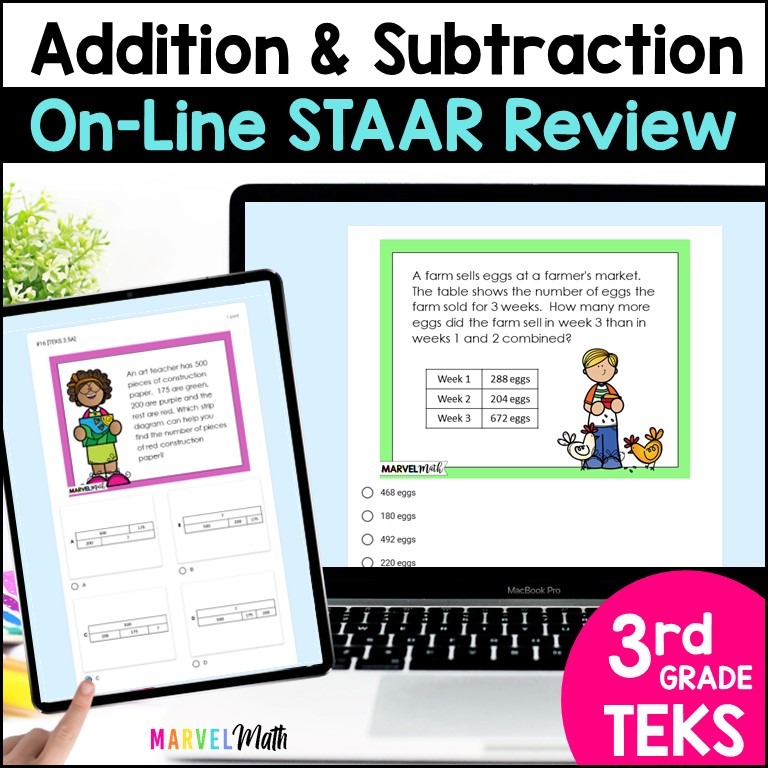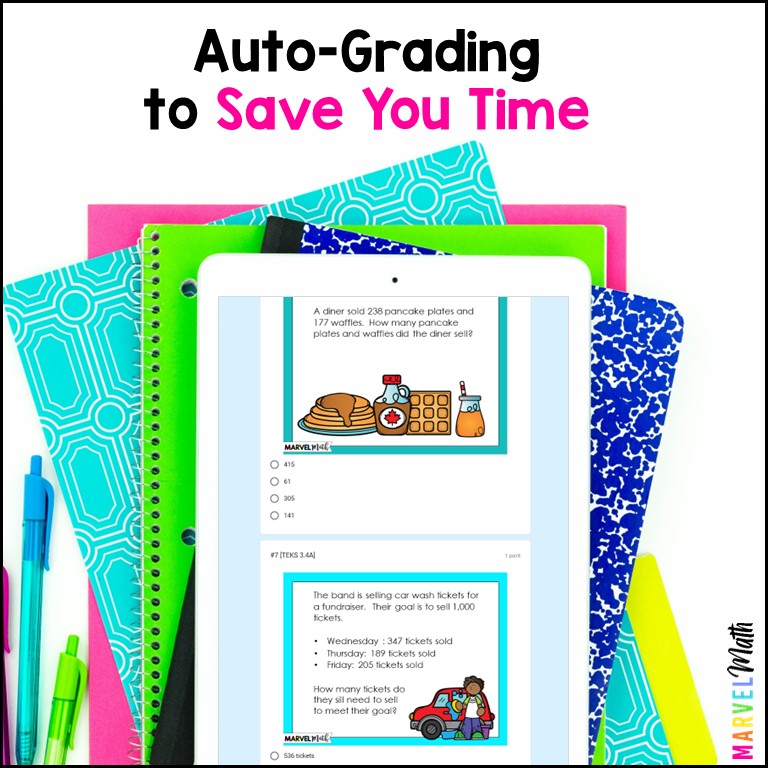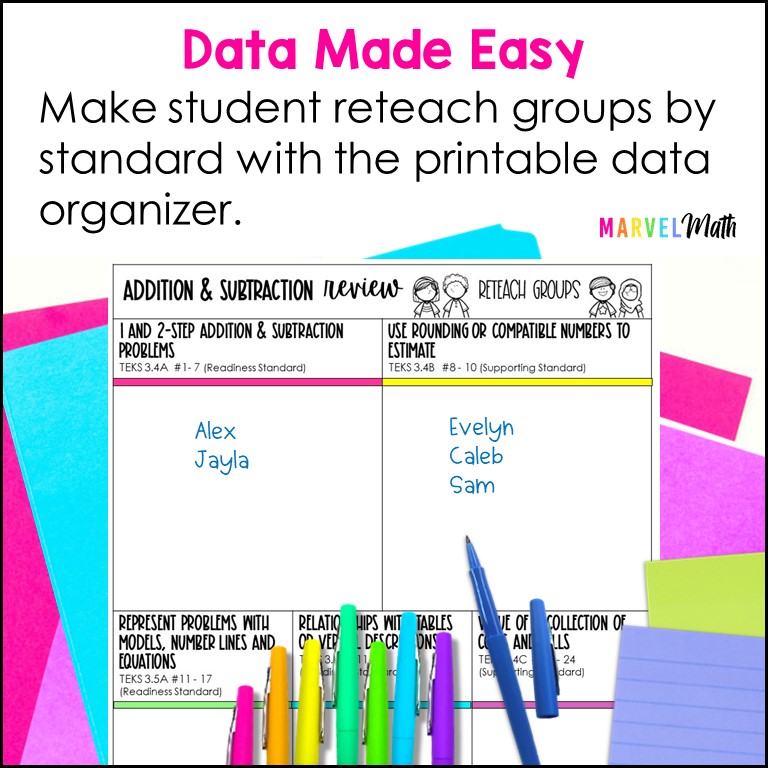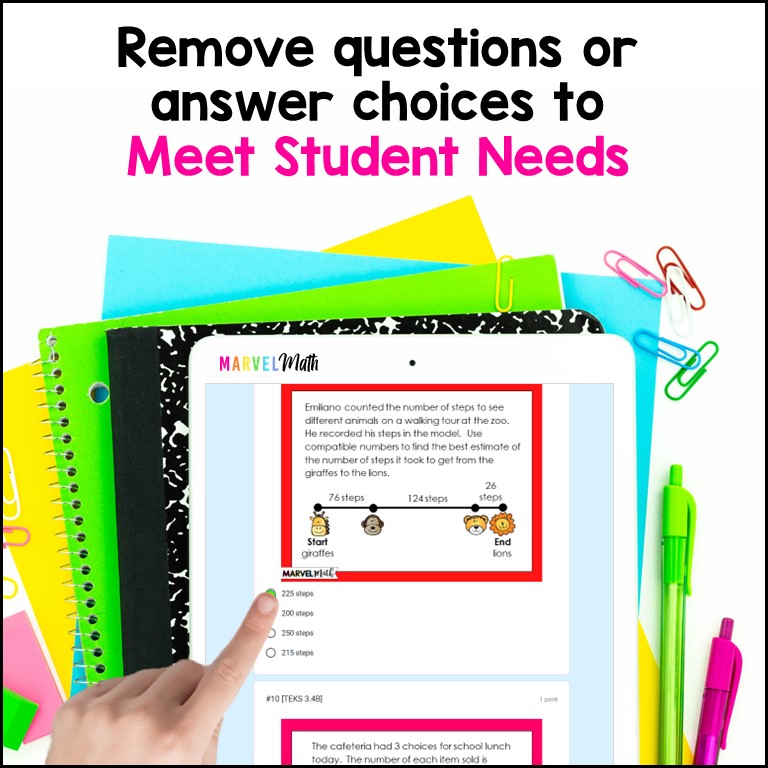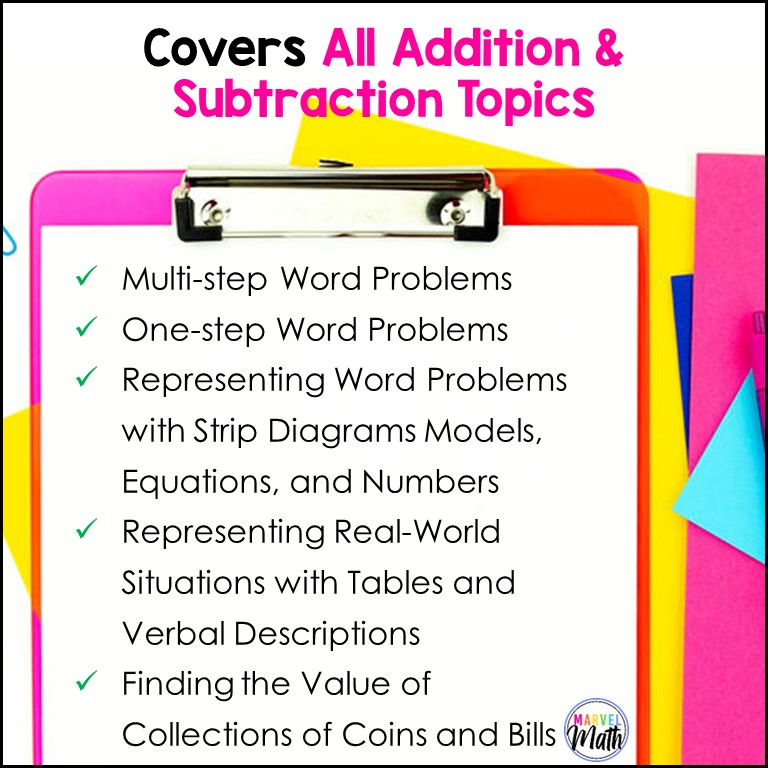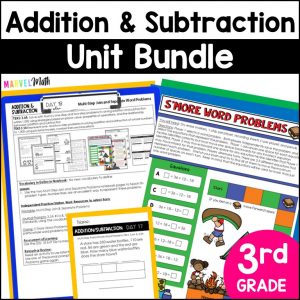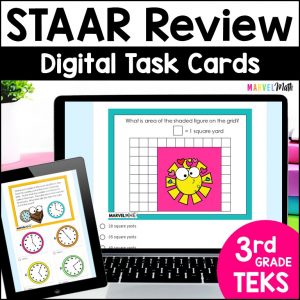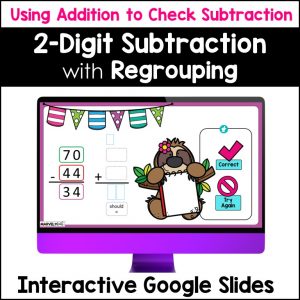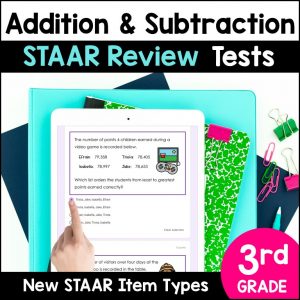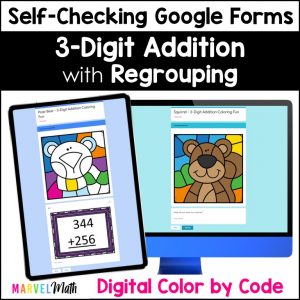Description
This resource includes 24 TEKS-aligned Digital Task Cards for Addition and Subtraction. There are a variety of one and multi-step word problems, problems with strip diagrams, equations and tables. This resource can be assigned for Distance Learning via Google Classroom. These task cards are in a Google Form, which means they are automatically graded when students click submit!
I have designed these task cards to give more weight to the Readiness Standards which comprise nearly 2/3 of the STAAR test. The questions are rigorous and have bright graphics to keep students engaged. All questions are multiple choice.
This resource can be used as a 24 question review activity, but it can also be used in many other ways! You can make a copy of the Google Form and delete questions to differentiate. There are 24 questions included, so you also have the ability to create multiple reviews from this resource, splitting up the questions to use in a variety of ways. Please note that the questions are not editable, but most of the answer choices are editable.
You do not need Google Classroom to use this resource, but you must have a Google e-mail to use Google Forms.
This set includes Task Cards to help students practice all of the Addition and Subtraction TEKS plus Money.
What’s Included?
- PDF with a Link to make a copy of the Google Form in your Google Drive
- Directions on how to assign the Google Form to your students in Google Classroom
- Printable Teacher Tracking sheet to record names of students who are struggling with each of the TEKS (based on the problem numbers they missed)
Topics include:
- One-step word problems
- Multi-Step word problems
- Representing word problems with strip diagram models, equations, and numbers
- Representing real-world situations with tables and verbal descriptions
- Finding the value of a collection of coins and bills
TEKS Alignment:
Readiness Standards
3.4A: (7 questions) Solve with fluency one-step and two-step problems involving addition and subtraction within 1,000 using strategies based on place value, properties of operations, and the relationship between addition and subtraction.
3.5A: (8 questions) Represent one- and two-step problems involving addition and subtraction of whole numbers to 1,000 using pictorial models, number lines, and equations.
3.5E: (4 questions) Represent real-world relationships using number pairs in a table and verbal descriptions.
Supporting Standards
3.4B: (3 questions) Round to the nearest 10 or 100 or use compatible numbers to estimate solutions to addition and subtraction problems.
3.4C: (3 questions) Determine the value of a collection of coins and bills.

